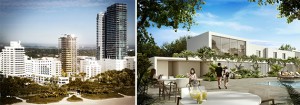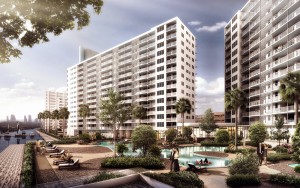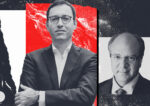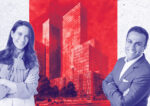Trending
Q&A with ADD Inc.’s Jonathan Cardello

Jonathan Cardello, ADD Inc. senior principal and architect, has worked on the transformation of seven Collins Avenue hotels, beginning with the Shelborne and more recently with the Shore Club.
Cardello sat down with TRD to discuss what he takes into consideration when renovating a historic Art Deco hotel and why he thinks Miami needs to grow before it’s a global city.
You’re new name is “ADD Inc., now with Stantec.” What are the challenges that come along with the merger?
We merged on Sept. 19. That day will be burned into my memory. Oddly enough, they don’t want to change how we handle projects. Have IT systems changed? Yes, but that happens in your own company before a merger. My perspective is that we are ADD Inc. and the name is changing, but we’re still the same DNA as it’s always been. Geographic diversity is the biggest change. This gave us the ability to get out of Florida.
How have you been involved with redesigning hotels on Collins Avenue?
I usually get in on the design vision of a project. From Aloft, how to preserve certain aspects of the original planning was a key component on that. Also, how we took the Aloft concept and brought it specifically to Miami Beach. We looked at the palette, specific furniture pieces. Aloft is more of a travel hotel, but on the beach it’s more of a relaxing, resort hotel. So the pieces of furniture, how people engage, how you accommodate seating in a space. How you put venue space in a rooftop deck, for example, that engages with water and the sensibility of beach living.
At the Gale, there’s a nightclub, restaurant, barista, rooftop bar — it provides a lot of diversity for the guests to stay on the property. You have to be conscious of functionality. There, you have a single kitchen that has direct access to every food venue in that building, so that you can operate efficiently and effectively. Of course, aesthetics are important, and how you develop the total vibe of the project.
Berkeley Shore is going to start construction soon. That’s another non-oceanfront property that we’re basically adding a 10-story addition on the back. A rooftop pool is a great way to be on the property, enjoy the sun and not necessarily have the only option of the beach.
A lot of people looked at the west side of Collins [Avenue] as the second tier hotels. They don’t need to be. They can be just as cool, have all of the amenities. It’s a different experience than being in the high-rise oceanfront hotel that some people like. You can get the same discerning traveler who’s going to want that product. We’re kind of excited that we’ve been pushing those hotels on that side of the street and reinventing them.

Renderings of the renovated Shore Club at 1901 Collins Avenue
Tell me about Shore Club.
Shore Club is a total reinvention of the property. Splitting the front portion is really a restorative approach to bringing the old Shore Club back to its grandeur. The towers on the side street are getting revamped as the luxury residences. We’ll also be redoing the pool deck, adding one of the largest pools in South Florida on the property.
What are the challenges to maintaining a building’s historic character but also integrating modern elements?
Our attitude is you always build for the period of time you’re in. Otherwise, 100 years from now, our urban environments are just Disney World. That’s really what it is. You have to look at the context of the historic environment, how we complement but contrast the historic pieces. You don’t want to blend away the strength of the historic forms and shapes. They’re actually quite fun problems.

Southgate Towers at 900 West Avenue in Miami Beach
Besides hotels, what else are you working on?
Another project going on in South Beach is the 14-story Southgate Towers on West Avenue. We equally get excited when we get to do a quality rental apartment project. Service people still need to come; young people still need to be able to live. They need to have access to these communities. The last thing you want to do is displace all the people who are part of that support structure. And we don’t have any public transportation.
What do you think about the surge of condo-hotels?
I think the branded residences concept is a good thing. Condo-hotels were just a sales mechanism to subsidize and sell off the front desk. Let’s be honest about that. The branded residences are doing much more for that mechanism. They’re providing the service level, access to certain amenities. And when you have a true brand that wants to do those services, you can create a unique destination. Like the Ritz-Carlton Residences Miami Beach.
Where do you see the market going this year?
The good thing is that Miami has diversified much more greatly than it has in the past. We’re building a lot of core rental product in the city of Miami right now. In the condo market, there’s a lot of diversity that previously was not here. The hospitality market is strengthening with the ability to have conferences and retreats. The mixed use projects — Miami Worldcenter, Brickell City Centre, Mary Brickell Village, River Landing — they’re bringing the services into the city that make people want to live here. People want to shop. They want things to do at night.
I think the city has a challenge in how to attract corporate headquarters and good-paying jobs. It’s a state issue. We have to look at mechanisms of tax-incentive fundraising. Looking at ways to create a reason why corporate headquarters should come into the city. I think we have a good five years in the cycle until we see a downturn.
From an aesthetic perspective, what do you think about SkyRise?
You know, all cities need to be able to dream wildly and bring in things that are going to make a statement in that city. You can like or dislike products, but the concept of bringing that into the city needs to happen. Miami needs to brand itself. It’s known, but it doesn’t really have a brand. We’re a strong enough urban area where we should have a really cool identity to ourselves. I think it’s time to do that.




